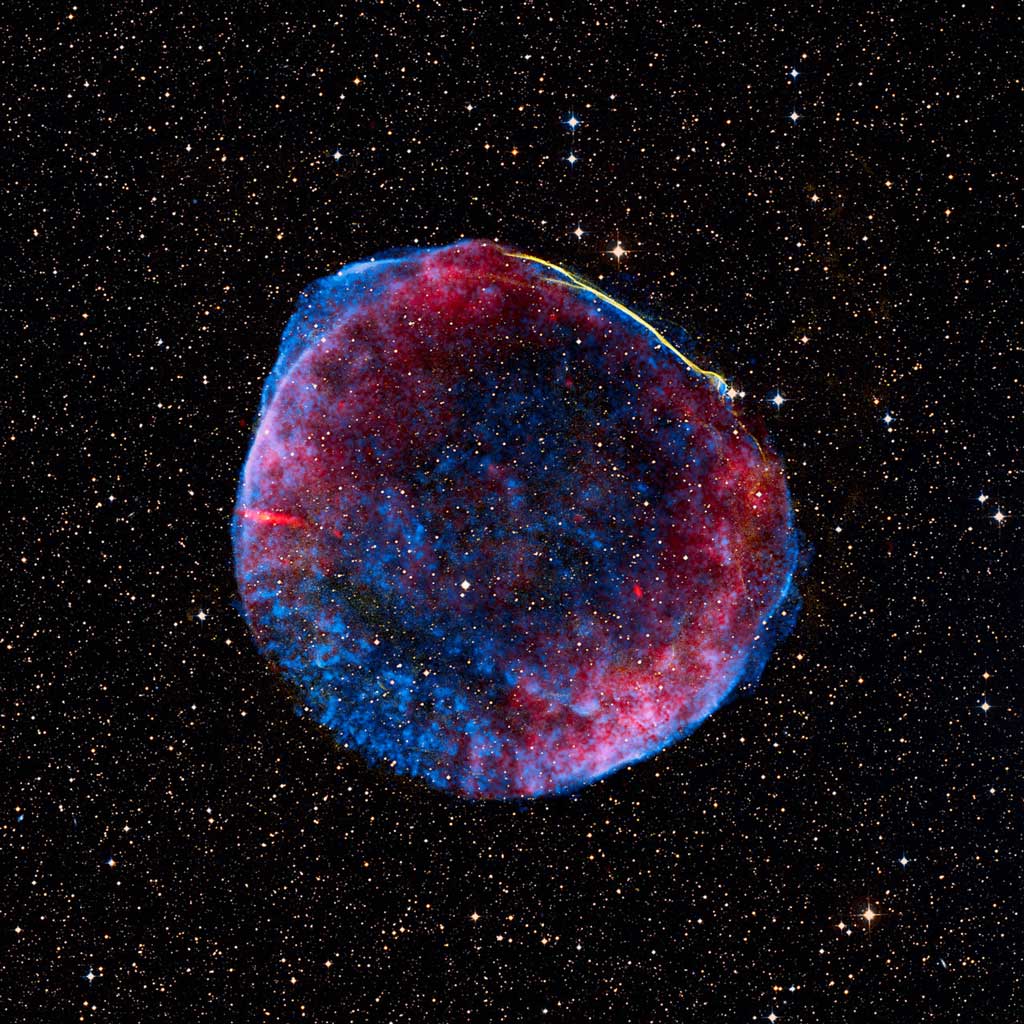When the object we now call SN 1006 first appeared May 1, 1006 A.D., it was far brighter than Venus and visible during the daytime for weeks. Astronomers in China, Japan, Europe, and the Arab world all documented this spectacular sight. With the advent of the Space Age in the 1960s, scientists were able to launch instruments and detectors above Earth’s atmosphere to observe the universe in wavelengths that are blocked from the ground, including X-rays. SN 1006 was one of the faintest X-ray sources detected by the first generation of X-ray satellites.
A new image of SN 1006 from NASA’s Chandra X-ray Observatory reveals this supernova remnant in exquisite detail. By overlapping 10 different pointings of Chandra’s field of view, astronomers have stitched together a cosmic tapestry of the debris field that was created when a white dwarf star exploded, sending its material hurtling into space. In this new Chandra image, low, medium, and higher-energy X-rays are colored red, green, and blue, respectively.
The new Chandra image provides new insight into the nature of SN 1006, which is the remnant of a so-called type Ia supernova. This class of supernova is caused when a white dwarf pulls too much mass from a companion star and explodes or when two white dwarfs merge and explode. Understanding type Ia supernovae is especially important because astronomers use observations of these explosions in distant galaxies as mileposts to mark the expansion of the universe.
The new SN 1006 image represents the most spatially detailed map yet of the material ejected during a type Ia supernova. By examining the different elements in the debris field — such as silicon, oxygen, and magnesium — the researchers may be able to piece together how the star looked before it exploded and the order that the layers of the star were ejected, and constrain theoretical models for the explosion.
Scientists also are able to study just how fast specific knots of material are moving away from the original explosion. The fastest knots are moving outward at almost 11 million mph (18 million k/h), while those in other areas are moving at a more leisurely 7 million mph (11 million k/h). SN 1006 is located about 7,000 light-years from Earth. The new Chandra image of SN 1006 contains over eight days worth of observing time by the telescope.










